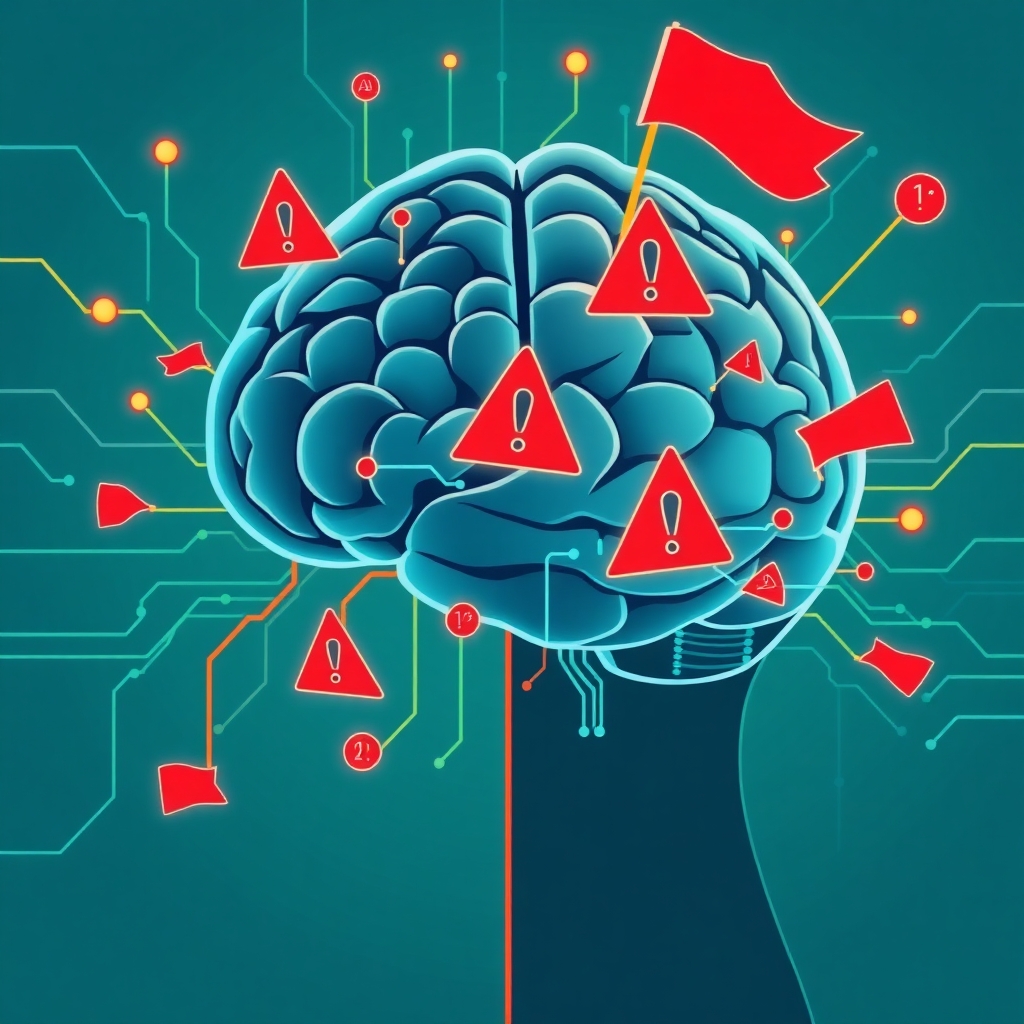RAG Can Make AI Models Riskier: New Research Shows a 30% Increase in Unsafe Outputs
Introduction
Retrieval-Augmented Generation (RAG) has emerged as a powerful technique to enhance the accuracy and relevance of AI models. By grounding AI’s responses in real-time, verifiable data, RAG promises to overcome the limitations of static, pre-trained models. However, recent findings reveal a potentially alarming downside: RAG can inadvertently increase the risk of unsafe or misleading outputs. This blog post delves into these findings, exploring how RAG systems can amplify risks and offering actionable strategies to mitigate them.
The Challenge: While RAG excels at providing contextually relevant and up-to-date information, it introduces complexities regarding data quality and safety. Integrating external data sources means the AI model is only as reliable as the data it retrieves. If the data is outdated, biased, or of poor quality, the AI’s responses can be compromised, leading to outputs that are dangerous or inaccurate.
The Solution: In this post, we will explore the new research that uncovers the hidden risks of RAG and what steps can be taken to counter them. We will present a practical guide for deploying RAG-enhanced AI systems responsibly.
Expectations: By the end of this blog, you’ll have a solid grasp of the risks associated with RAG, strategies to mitigate them, and a clear path toward deploying RAG-enhanced AI systems responsibly.
The Research Findings
New research indicates a significant increase in unsafe outputs when using RAG. The Bloomberg research indicates a 15-30% increase in unsafe outputs when using RAG. This alarming statistic underscores the critical need for caution when implementing RAG in AI systems.
Amplifying Risks
RAG systems can amplify the risks of generating dangerous or misleading information. By relying on external data sources, AI models become vulnerable to the biases, inaccuracies, and malicious content present in that data. This is how the issue occurs in technical terms:
- Data Injection: Malicious actors can inject harmful content into external data sources, which can then be retrieved and used by the RAG system.
- Bias Amplification: If the external data sources contain biases, the RAG system can amplify these biases in its outputs.
- Outdated Information: RAG systems can retrieve outdated or inaccurate information from external sources, leading to incorrect or misleading outputs.
Case Studies
Consider a RAG-enhanced chatbot designed to provide financial advice. If the chatbot retrieves outdated market data or biased investment recommendations, it could provide harmful advice to users. Similarly, a RAG-enhanced medical diagnosis tool could misdiagnose patients if it relies on inaccurate or outdated medical information.
Data Quality Matters
The quality of data plays a pivotal role in the safety of RAG systems. Outdated or poor-quality data can severely compromise the reliability of AI responses. AI is only as good as the data it is fed.
The Impact of Unreliable Data
Unreliable data can lead to a cascade of problems in RAG systems, including:
- Inaccurate Responses: AI models may generate incorrect or misleading answers.
- Biased Outputs: AI models may exhibit biases present in the data, leading to unfair or discriminatory outcomes.
- Compromised Security: AI models may become vulnerable to data poisoning attacks.
Ensuring Data Integrity
To mitigate these risks, organizations must prioritize data quality and integrity. This involves:
- Data Validation: Implementing rigorous data validation processes to ensure data accuracy and completeness.
- Bias Detection: Employing techniques to identify and mitigate biases in data.
- Data Governance: Establishing clear data governance policies to ensure data quality and security.
Mitigation Strategies
Addressing the risks associated with RAG requires a multi-faceted approach. Organizations must implement robust safety protocols and testing procedures to ensure the responsible deployment of RAG-enhanced AI systems.
Implementing Domain-Specific Classification Systems
One effective strategy is to implement domain-specific classification systems. These systems can categorize and filter data based on its relevance and safety. The domain-specific classification systems can be implemented using business logic
Improving Guardrails Through Business Logic Checks
Guardrails are essential for preventing AI models from generating unsafe or inappropriate outputs. Improving guardrails through business logic checks can enhance the safety and reliability of RAG systems. Here are some ways of achieving this:
- Input Validation: Validate user inputs to prevent malicious or inappropriate queries.
- Output Filtering: Filter AI outputs to remove unsafe or inappropriate content.
- Content Moderation: Implement content moderation policies to address harmful or offensive content.
Conducting Thorough Testing of AI Systems
Thorough testing is crucial for identifying and addressing vulnerabilities in RAG systems. Organizations should conduct comprehensive testing to ensure that AI models are safe, reliable, and unbiased. The following methods are good to explore:
- Unit Testing: Test individual components of the RAG system to ensure they function correctly.
- Integration Testing: Test the interaction between different components of the RAG system.
- Adversarial Testing: Test the RAG system against adversarial attacks to identify vulnerabilities.
Real-World Implications
The risks associated with RAG have significant implications for businesses, particularly in sensitive sectors like finance, healthcare, and law. It is more important than ever that you are using appropriate data when dealing with enterprise AI.
Financial Services
In the financial sector, RAG-enhanced AI systems are used for tasks such as fraud detection, risk assessment, and customer service. However, if these systems rely on inaccurate or biased data, they could make flawed decisions with serious consequences. For example, a RAG-enhanced fraud detection system could falsely accuse innocent customers of fraudulent activity, leading to financial losses and reputational damage.
Healthcare
RAG-enhanced AI systems are used in healthcare for tasks such as medical diagnosis, treatment planning, and drug discovery. If these systems rely on outdated or inaccurate medical information, they could misdiagnose patients or recommend ineffective treatments. This could have life-threatening consequences.
Conclusion
As RAG becomes increasingly prevalent, it is essential to recognize and address the potential risks associated with its use. This blog post has highlighted the potential dangers of RAG, emphasizing the increased risk of unsafe outputs and the importance of data quality. By implementing robust safety protocols, organizations can harness the power of RAG while minimizing the risks.
Remember the initial concern: RAG can inadvertently increase the risk of unsafe or misleading outputs. By prioritizing responsible AI practices, we can ensure that RAG remains a valuable tool for enhancing AI models.
Call to Action
Ready to learn more about implementing safe AI practices? Download our comprehensive guide to responsible AI deployment and start building safer, more reliable AI systems today!




